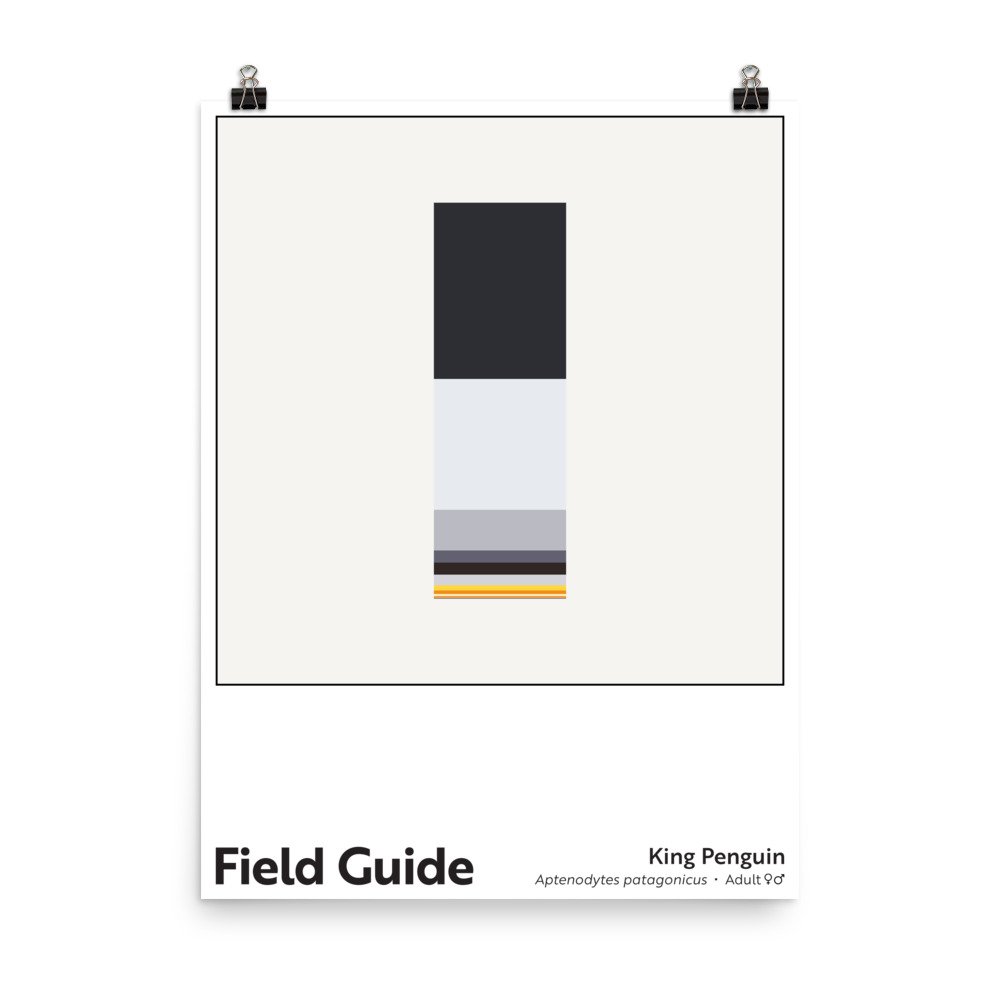Field Guide : King Penguin
Field Guide : King Penguin
Unlimited edition. 18 x 24 inch, museum-quality poster on matte paper.
Sure, king penguins are dressed in classic tuxedos for dinner service, but they also rock some around-the-collar flare. Seen from afar, this “flare” appears mostly orange (and that’s how many field guides describe the penguins – orange, black, and white), but close examination of different individuals reveals a yellow-orange range, with many king penguins showing more mustard yellow than orange. To create this color column, I averaged out the variation I observed. As I worked, I wondered what role, if any, such color differences play in penguin social dynamics. It turns out we don’t know exactly; although there is some research showing that males with larger cheek patches are more attractive to females, I turned up no papers about color benefits.
The king penguin is often confused with its larger and more famous relative, the emperor penguin, which lives in more southerly latitudes. King penguins prefer to stay north of the icepack, dividing their time between subantarctic islands, where they have large breeding colonies, and offshore foraging. Both parents take turn brooding their eggs in the colonies, with shift changes every 6 – 18 days. While one parent broods and protects the egg, the other parent heads out to sea to hunt. Once the chicks are born and off to a good start, both parents will head out to forage, leaving their chick in an enormous “day care” grouping under the watchful eye of other penguin parents. Amazingly, chicks may go unfed for months during these stretches; healthy chicks can survive for up to 5 months without feeding, and the chicks that survive will typically receive only 1-3 meals during the May – September Southern Hemisphere winter.
When out at sea, adults usually hunt at depths of 500 – 1,000 feet (150 – 300 meters), although king penguins have been recorded diving to over 1,600 feet (500 meters). Their primary prey are lanternfish, squid, and crustaceans.
Note: These archival poster prints feature rich, appealing colors. I encourage customers to take care in handling them until they are framed/protected for display; the darker colors on the matte paper can be scratched. They ship rolled, so customers need to flatten them before framing (or have their framer do so).
Charitable Sales Model: Whenever one of these poster prints is purchased, a charitable contribution equal to 10% of the print’s cost (or $3.60) is made to a nonprofit working to tackle environmental or social challenges. Read more about my charitable sales model here.

